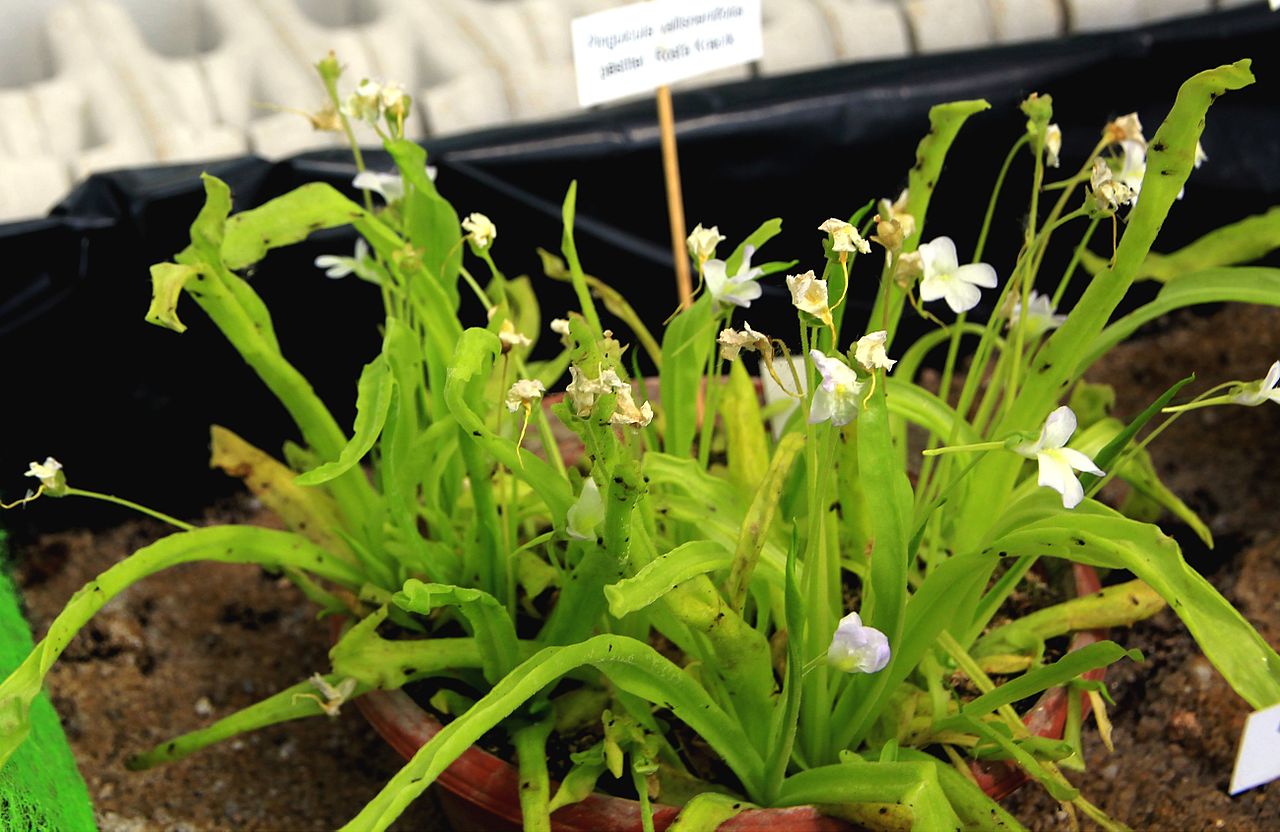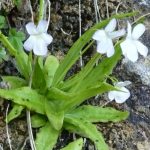
Image - Wikimedia / Karelj
There are many types of carnivorous plants, but there are relatively few that we can find in Spain. One of them is the Pinguicula vallisneriifolia, a plant that could well pass for little more than a "weed", but that in its leaves is a system of trapping prey on which it feeds, such as mosquitoes.
But if that name doesn't tell you anything, it is likely that this other one sounds like something to you: greasy. And if it doesn't help either, don't worry. Next I am going to tell you everything about this plant.
Origin and characteristics of Pinguicula vallisneriifolia
Our protagonist is a carnivorous plant belonging to the botanical family Lentibulariaceae, whose scientific name is Pinguicula vallisneriifolia. As we said, we will find it growing wild in Spain, specifically in what is today the Natural Park of the Sierras de Cazorla, Segura and Las Villas, in the province of Jaén. A population was also found in the province of Albacete and in the Valencia Community.
It has a grassy aspect, because it is indeed a grass. It lives for several years, which is why it is said to be perennial, something that could lead us to confusion, since in winter to protect itself from the low temperatures it gets rid of its leaves, and remains with a bud with stolons. During the spring the leaves sprout again, which have an elliptical or oblong-obovate shape, which will measure up to 25 centimeters long by 2,5 centimeters wide in summer.
Its flowers sprout in late spring from a flower stalk called escapo in botanical jargon, which is up to 17 centimeters tall. The corolla is pale violet, pinkish, or sometimes white. The fruit is a capsule that contains reticulated seeds of about 0,7 to 0,9 millimeters.
It is an endangered and protected species both in Andalusia and in the province of Valencia.
How does it catch its prey?
The answer lies in its leaves. When you touch a sheet of PinguiculaWhatever its species, the first thing you notice is that it is not as smooth or soft as a leaf from any other plant. This is so because they are sticky, which is why small insects such as mosquitoes and flies get trapped in them. In the end, they die and the carnivore absorbs their nutrients.
How do you take care of the grease?
Take care of a Pinguicula vallisneriifolia it is quite an experience. As it supports the cold, you do not have to be as aware of it as you would be of a tropical sundew for example, or of a Nepenthes. But still, it is very important to know your needs so that you can grow in conditions:
Location
It is necessary to keep it away from home, since it is not customary to live indoors. Likewise, it must be in semi-shade, in a corner where the sun will not shine directly at any time.
Substratum
A suitable substrate for greases is the following mix:
- 30% blond peat (for sale here)
- 20% fine quartz sand
- 30% perlite (for sale here)
- 20% expanded clay (for sale here)
As for the pot, it must be made of plastic, with drainage holes. It is not a good idea to put a plate under it, except in summer and only if it does not rain or it rains very little in that season.
Irrigation
- Image - Wikimedia / Juandiegocano
It must be watered with rainwater or, if there is no way to get it, distilled or with a very weak mineralization water (with a dry residue less than 200ppm). The frequency of irrigation will be greater in summer than in winter, so much so that during the summer season, and depending on the weather, it may be necessary to water 3-4 or even 5 times a week.
In winter, as it comes to rest and the temperatures drop, the substrate remains humid for a longer time. Therefore, irrigation will be less.
Anyway, you have to know that when watering you have to moisten all the soil well, something that you will achieve if you add water until the water that has not been absorbed comes out through the holes in the pot.
Subscriber
Do not fertilize your carnivorous plants, you could lose them. They feed on the prey they catch, so they do not need an extra 'compost'.
Pruning
If you consider it necessary, you can remove the dry leaves for fire Pinguicula vallisneriifolia at any time of the year, except winter. Use clean and disinfected scissors; This will minimize the risk of infection.
Multiplication
Do you want to get a copy? Then you have to know that it is multiplied by seeds, which must be bought in carnivorous plant nurseries. Being an endangered species, and also protected in certain areas, it is very important that these seeds come from authorized crops.
Once you get them, you have to plant them in plastic pots with the mixture of substrates mentioned above, and keep them in semi-shade.
Rusticity
It supports the cold, as well as the frosts of up to -4ºC.
Did you know this carnivorous plant?

